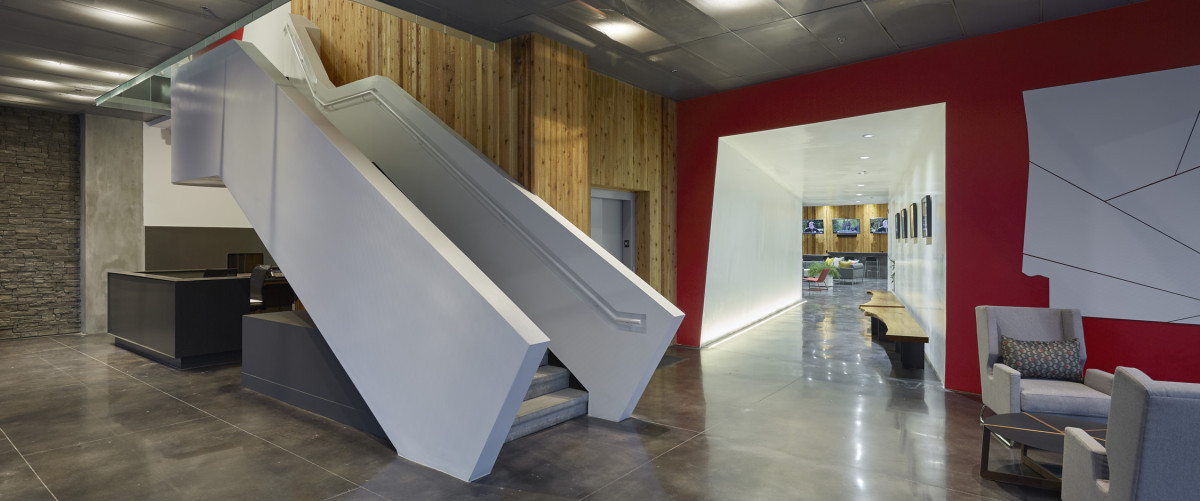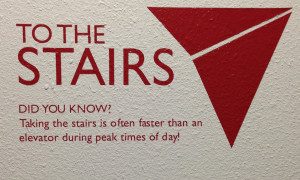
Building Healthy Places with Active Stairs

Signage on each floor prompts students to take the stairs at The Cardinal at West Center. According to The Center for Active Design, stair prompts that encourage stair use for health benefits have been shown to increase stair use by a median of 50%.
The nationwide obesity epidemic is especially acute in our home state. In Arkansas, 35% of adults are obese, up from around 25% just a decade ago. Though there are many factors influencing this trend, the design of cities, neighborhoods, and buildings plays a big part. Over the past few decades, physical activity has been systematically eliminated from our daily lives. The Center for Active Design does a great job of illustrating the ways in which patterns of real estate development have contributed to our current public health crisis.
As developers, we are working to learn more about what we can do, and we are incorporating active design into our projects. At The Cardinal at West Center (above), a student apartment building just off campus at the University of Arkansas, an iconic white stairway upstages the elevator. Signage throughout the building guides residents to the stairs and extols the convenience and health benefits of taking the stairs. Interior and exterior stairs are located strategically to be the most convenient way to get to and from campus. As we all work together for a healthier Arkansas, active design can be part of the solution.
This spring, Urban Land Institute released the Building Healthy Places Toolkit, exploring 21 evidence-based recommendations for improving public health through land use practices. This series highlights the Building Healthy Places recommendations, examining our current properties and practices, and identifying ways that we can push ourselves to create more healthy communities.
Building Healthy Places Recommendation #5 Design visible, enticing stairs to encourage everyday use
Building Healthy Places Recommendation #6 Install stair prompts and signage
HISTORICALLY, MANY BUILDINGS included a beautiful, grand staircase that people used on a daily basis. Over time, stairs have been relegated to the back corners of buildings. Incorporating well-lit, attractive, and easily accessible staircases into a project is a great way to encourage people to skip the elevator or escalator and incorporate small bursts of daily activity, particularly for trips of four floors or less.
—Building Healthy Places Toolkit: Strategies for Enhancing Health in the Built Environment, Urban Land Institute, 2015

